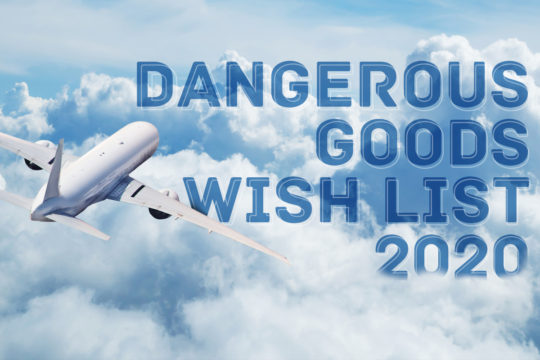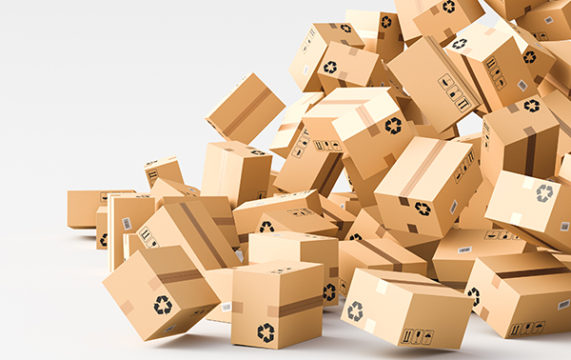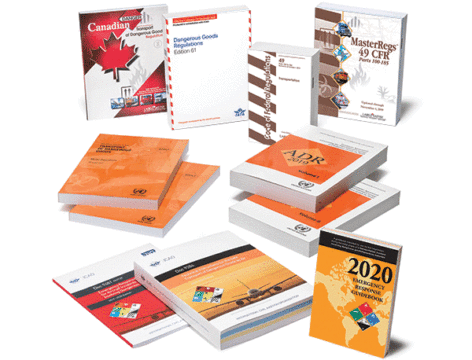
Every fall, we invite everyone who attends the Dangerous Goods Symposium (and lots of other hazmat pros) to answer one simple question:
If you could wish for one thing in the entire Dangerous Goods galaxy, what would it be?
Now, for the third straight year, we’ve compiled those answers to kick off our year with the annual Dangerous Goods Wish List.
Here’s how some of the world’s top Dangerous Goods professionals would make the business of managing the hazmat supply chain easier, less confusing or just plain safer.
Lithium batteries

When DG pros rank the issues that come up in their daily job performance, lithium batteries are always at the top of the list. With more battery-powered devices being shipped every day, it’s no wonder the wishes keep coming.
I’d rewrite the lithium battery regulations so they are much more straightforward to read and understand, particularly related to the small battery exceptions and the requirements for air transport. All the cross-references confuse plenty of smart people in companies of all sizes who have to deal with shipping lithium batteries, whether in equipment (used or otherwise) or not. Developing a more stable battery chemistry/configuration is also on my list.—Kathy Doyle, Relief EHS
I wish for a regulatory definition of a damaged lithium battery.—Todd Coy, KBI
I hope we can come together as air carriers to mitigate the risks we face from undeclared and misdeclared DG, especially lithium-ion batteries. The mitigation is incumbent on us based on our SMS programs, but we need to come together as an industry, get in the driver’s seat and go above and beyond the regulations to send the message that we mean business—and that business is the safety of our industry.—Bill Wojtas, CDGP, United
My one DG wish would be a foolproof, guaranteed way to make new and recurrent students comprehend all the various lithium battery scenarios. I’ve been known to bring empty boxes and soup cans from home and use them to demonstrate the difference between PI965 Sec II and Sec IB!—Jennifer Plank, DHL
E-commerce

The e-commerce boom has turned lots of mom-and-pop outfits into hazmat shippers, making Dangerous Goods shipping more challenging and education more crucial. Here are a couple of wishes for our get-it-tomorrow world.
I would wish for global understanding within the e-commerce community regarding the hazardous nature of many materials being sold online and the regulations and requirements that exist for shipping these materials safely.—Vinny Desiderio, U.S. Postal Inspection Service
Keep mail safe! The possibility of Dangerous Goods in mail is becoming even more of a “risk” as the e-commerce industry booms. Creating transparent, harmonised processes is key for the safe transport of mail by air. Whilst there is a lot of active work ongoing, I believe the awareness to the general public can be intensified. Training must be of a high standard to ensure all operational personnel are ready to spot undetected consignments, along with security screening that enables quick identification.—James Wyatt, aeroconcept
Harmonization

Or do you spell it “harmonisation”? Whichever continent you call home, there’s no doubt a common set of regulations would make everyone’s jobs easier.
I wish for PHMSA to finalize HM-215O. That continues to be the 400-pound canary in the US DG world.—Nikki Burgess, CDGP, DGSA, Labelmaster consultant
Consistency globally.—Lori Parker, Arylessence
I wish there was one global set of regulations and every country followed the same set of rules. And, as a second wish, that lithium battery rules were simplified and easy to understand. Companies could not manufacture unless they had certified transportation experts on staff.—Erin Gaul, GEODIS
Harmonize (i.e., eliminate) combustible liquid regulations. Get a new UN number, or eliminate the use of UN3082/3077 for materials that are only Reportable Quantity (again, improving global harmonization).—Michelle Gardner, Ecolab
A set of regulations that could apply to all modes, with mode-specific annexes.—Geoff Leach, Labelmaster consultant
Regulations and enforcement

Thousands of dedicated men and women work year-round to revise, refine and redefine Dangerous Goods regulations—and yet, somehow hazmat pros are always wishing for the perfect set of regulations. We’d generally like to see tougher enforcement, too.
My big wish for the coming year would be that all countries and the various law enforcement agencies in those countries put up a united front against hazmat violators, with serious consequences (fines and penalties), so this problem will finally be tackled and made to go away (as much as possible).—Torsten Helk, BDP International
I would wish for adoption of the electronic DGD en masse. From shipper to forwarder to airline, if our industry and supply chain scrapped the paper DGD in lieu of the eDGD, we could truly begin reaping the rewards of technologies which make the transport of Dangerous Goods safer and more efficient.—Nicholas Carlone, IATA
Remove Combustible Liquid Exemption from US DOT 49 CFR and focus on standardized implementation of the Limited Quantity Exemption.—Pete Breski, PPG
Merge the IMDG books into one.—Katie Okoth, Ecolab
I wish there were a lot less UN number entries and they would only be differentiated by how they need to be managed safely during transportation. If the emergency response procedures to respond to an incident are the same, perhaps further differentiation by UN number may not be needed in many cases. Simplify (and save paper).—Anonymous
One of my students today wished the 49 CFR was as easy to navigate as the IATA DGR … and I have had several students wish for a world without “Q values.” I wish there was a way to increase awareness and compliance of the hazardous materials regulations without a cataclysmic event like the ValuJet incident to light a fire under everyone.—Jay Johnson, Labelmaster consultant
Education

Dangerous Goods training is mandatory for everyone in the supply chain who handles hazmat, but “education” means more than that. Our DG pros wish for a deeper understanding of the issues we all face—an understanding that goes all the way up to the C-suite.
A college degree for DG.—Betty Dierwechter, John Deere
I’d like to see proper investment in training and education and a proper Dangerous Goods transport curriculum in supply chain and logistics degree programs.—Jim Shimko, Labelmaster consultant
I wish all DG pros had an endless amount of DG analytics to share with our executive teams to truly identify where our biggest areas of risk are when it comes to transport safety. Getting C-suite buy-in can be a challenge as we are seen as a cost center vs. a profit center because we don’t create direct revenue. Additionally, knowing specifically where the risk is would allow for DG pros to focus primary attention on those areas to mitigate the risk.—Cody DeGrush, GEODIS
Maybe some of these wishes will come true in 2020, helping keep shipments just a little more safe—or shippers just a little more sane.
Want more wishes? Revisit our DG Wish Lists from 2018 and 2019. Have a wish of your own? Leave a comment below!
Make sure your shipments are safe and in complete compliance with a full line of solutions from Labelmaster—a full-service provider of goods and services for hazardous materials and Dangerous Goods professionals, shippers, transport operators and EH&S providers.



Dangerous Goods compliance is considered as a cost center. A “bean counter” as well as the C-Suite is always looking for the ROI (Return on Investment). IMHO, the answer is relatively simple:
(Cost of training+ value of time spent on disputing charges + costs of a specialized lawyer) / (fines & penalties by DOT/FAA) = indefinite, as fines & penalties = 0 when there is full compliance. This is the highest ROI that you can obtain.
We like this analysis!
What if the hopes weren’t a dream? What if these wishes could come true in 2020?
Did you have one in particular in mind? Maybe our community can pull together to help make it happen!
Competency based training being fully implemented ( for instructors as well as industry) and enforced! Our profession has a wealth of extremely competent individuals, but there are those who have taken one or two courses and begin passing themselves off as DG Instructors. Competency based instruction may eliminate some of the chaff through continued certification with accredited agencies (IHMM, DGTA, etc). There are still too many cases of having to “clean-up” after bad coursework and instructional delivery. Competency based training is a big step forward.
My hope would be to propose the use of a new label for vehicles and large packages that directly indicate the distance that a person should move away if that load is accidentally released, direct reading, that shows the distance numbers around, I wrote Some of that in an article that you can read from my Linkedin profile, I only want to help non-professionals and avoid more deaths from fangerous goods accidents. I also hope you like the idea. Regards from Perú.
That’s an innovative and interesting idea. Thanks for sharing it!